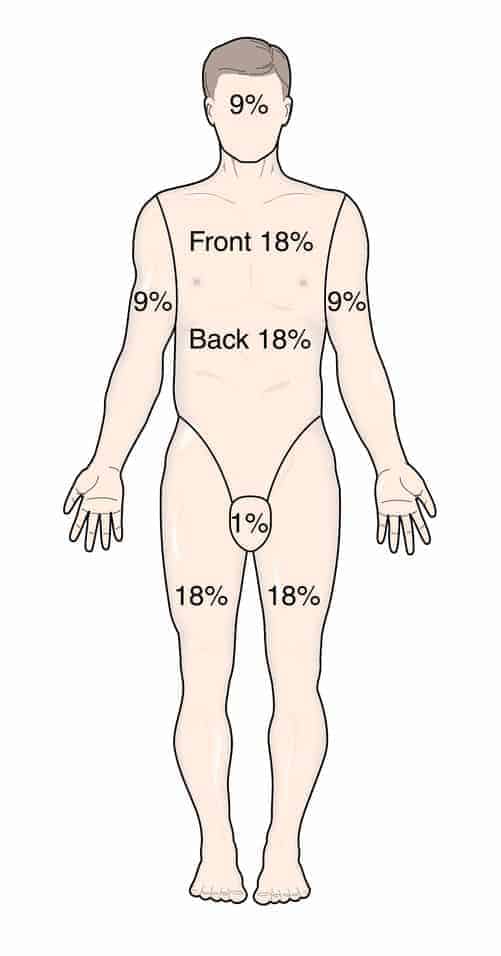
Limmer Education

by Limmer Education
Our articles are read by an automated voice. We offer the option to listen to our articles as soon as they are published to enhance accessibility. Issues? Please let us know using the contact form.
Our free NREMT review webinar last week had a great turnout – several hundred people! We heard from many of the attendees, but there were so many questions we couldn’t get to during the session. Our Chief Knowledge Officer, Dan Limmer, answered some of the most common ones for you.
Oxygen is given to patients with an oxygen saturation less than 94%. If it were only that easy. There may be some exceptions to that in the field and on the NREMT. These include patients with significant respiratory distress, some trauma patients, and others. My advice is not to automatically rule oxygen in or out by the saturation alone. Look at the overall patient presentation and complaint before you decide to choose oxygen. I will say that the NRB mask isn’t the go-to anymore unless the saturation is very low. We titrate oxygen up to no more than 99%.
Test anxiety is real. But before I go there, I need to say a few things.
Some anxiety is normal. It helps performance.
Before you blame poor performance on test anxiety, make sure you’ve ruled out other issues that cause anxiety and affect your performance. These issues include not studying appropriately, learning or reading issues, and attention deficit issues. Many times, you have anxiety because these other things need to be addressed.
Confidence in your preparation helps reduce anxiety.
If you really do have crippling anxiety, you may be able to help calm yourself with breathing or visualization exercises. Hypnosis may also be an option. If it is very bad, please talk to a professional.
First, thank the people who told you that for psyching you out. They are wrong. The NREMT is a valid exam and doesn’t deserve the bad reputation it gets. It also isn’t the NREMT’s fault that you don’t get a lot of questions like theirs in class. Class quizzes and some of your tests required you to memorize, not to think.
The similarity between the street and the NREMT is the same thinking and judgment. Do you think every call you go to as an EMT or paramedic will look exactly like it says in the book? I didn’t think so. This is why the NREMT gives you just enough facts to make a decision—sometimes a tough decision.
You may read a question and think to yourself “I would…” then you look for the answer you want, and it isn’t there. Instead of getting discouraged or fighting the question, look for the best answer. There will be something in the question that will guide you to that answer.
This is tough—and even tougher to conquer alone. When I ask students how they studied between tests they often say, “Well…I read my book again and looked at YouTube.” They largely floundered and wasted their next attempt.
There are a couple of things necessary to get your mojo back. If this were a mathematical calculation it would look like this:
A solid study plan + Validation = Mojo
This is actually why we built our EMTReview.com and ParamedicReview.com sites. We provide the study material. It can be as free-form or as structured as you like. We also offer live, interactive NREMT study sessions weekly. You can ask questions, learn how to read NREMT questions, and get feedback and validation from a trusted source.
We got so many of these during the webinar that we can’t answer them all. Some things require research and work on your part. If there is something you don’t know, there are several sources to use:
Your textbook
Your instructor
Trusted colleagues in EMS
The internet (trusted sources)
There are some things you should use with caution:
Random people at the station
Facebook groups
Any NREMT advice that includes the words “always” or “never” (e.g. ALWAYS give the patient oxygen). There are no “rules” for the NREMT. Every question requires you to evaluate the question and the choices given independently.
This is an easy and frustrating answer: Everything! If you didn’t study or work hard in class, you’ll have some work to do.
2025 update: The BLS exam topics have changed, but the information below still applies. Read about the 2025 changes. All of Limmer Education's products are fully updated for the exam changes.
The five sections of the NREMT have the potential to cover almost everything in class. Clinical topics are covered on the NREMT in three ways: pathophysiology, assessment, and management. I find that pathophysiology is often not covered in the depths many feel necessary so that is something good to study—and it will help you in most of the exam.
I also advise to study some of the nooks and crannies—things you don’t get a lot of in class—like childbirth, complication of childbirth, resuscitation and CPR rates/ratios for all ages, the rule of 9s, and maybe a bit of pediatrics.

No. Not in the least. The NREMT is a testing agency. They don’t set EMS policy or clinical standards. I would caution against any advice that begins or ends with, “It is an NREMT standard.”
The NREMT exams are created in item-writing sessions with very experienced educators as well as physicians. They use many sources including the NREMT’s Practice Analysis (a national survey of what things are performed by EMS providers at each level), the EMS Education Standards, and current science. The CPR guidelines put out by the American Heart Association play a big part. If a physician’s group puts out a position paper (e.g. spinal motion restriction), that may be included as well. You can check the NREMT’s website as they are very open about when they will start testing new guidelines.
What doesn’t the NREMT go by?
Your protocols, things your instructor said always and never about, and your textbook.
Does this freak you out? Probably. Should it? No. The questions on the NREMT have a best answer based on the facts given. If you paid attention during class, read your book, and go in reading the question and looking for the best answer, you will do just fine.


Limmer Education

Mike Miller

Dan Limmer, BS, NRP